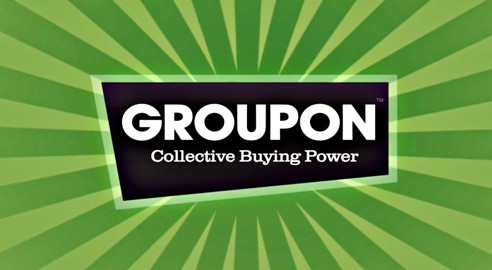The most common thing that people do when they need to develop a startup growth strategy for their company is to do a Google search for how other well-known companies in their sector were able to obtain hundreds, thousands, or even millions of users.
For example, if you are in the tourism industry, specifically in the lodging sector, you might think the ideal thing to do would be to analyze and later copy how Airbnb became the giant that it is today.
For the most part, they did this by using the strategy of offering their non-traditional lodging services, specifically during mass events such as the 2008 Democratic National Convention in Denver, which saturated the number of rooms that the hotels in the city could offer. In this way, Airbnb was the ideal solution for some visitors.
However, the tactics they used in order to grow their company are surely not compatible with your business venture for several reasons: the current context is not the same, the service your company offers is not exactly the same, or their strategy was already consolidated, leaving no room for competitors to enter at a reasonable price (this is what happened with Google AdWords, which was at a time an excellent strategy for growth for a large number of companies until it became no longer profitable).
No matter how much it may be justified, the goal is to not copy the tactics of others (that is, the specifics of what the company did in order to achieve their growth).
Conversely, what you should do is to learn to better understand how they achieved success in order to design your own startup growth strategy that will allow you to increase your number of clients.
Is your startup ready for growth?
It is important that you never skip over this question or take it for granted. In order to grow your business, first you should achieve Product/Market Fit, if not, you are not ready for growth, and you could be sealing a doomed fate for your project.
But how do you know if you have achieved Product/Market Fit? There are 3 ways that you can find this out on your own:
1) If you already have users, no matter how few, if your product disappeared for some reason, would they really be highly upset with you?
2) Additionally, have your current clients for your platform been obtained by organic growth (by word of mouth)?
3) Of the new users who find and use your service, you will see that the great majority of them (around 70%) will stop using it within the first few days/weeks. This is generally normal and should not cause you much worry as long as the other 30% use your service over several months to years of time. It is then that you can assume that you are on the right track.
Be careful, once you observe this in your company, you should sit down and crunch the numbers. That is, you need to answer the following question: Is it economically viable to invest, for example in online ads, in order to bring on 10 new users out of which only 3 will continue using and paying for your service over the long run? More specifically, if it costs you 10 Dollars to bring 10 new users, can you recuperate the 10 Dollars with the 3 clients who will continue using your service?
If you can answer yes to the 3 points mentioned above, you can be assured that you have obtained Product/Market Fit.
I will be clear again: don’t consider growing your company if you have not achieved Product/Market Fit. Just look at what happened to Homejoy, which raised 38 million Dollars to invest in growth, when in reality they had not even achieved Product/Market Fit yet.
A recommendation: Seeking Product/Market Fit can take months or even years, but I assure you that it is the first and most important step that you should do as the founder of your business venture.
In our company, it took us 1 year and 7 months, but it was the best investment that we could have made. This first phase is not “a race to see who can get there first,” it is more like a marathon in which the person who wins is the one who keeps running (insisting and trying) without giving up and sooner or later reaches the goal.
The question at hand: What is the road to take for planning your own startup growth strategy?
In order to design your own startup growth strategy, I invite you to respond to each of the following questions, implementing them one at a time in your company, all the while learning, modifying, and implementing them again (there is constant interaction in order to obtain continually better results), it is a process, not just a one-time action.
1) How can the first users be obtained?
a) Word of mouth: Paul Graham, founder of YCombinator, teaches us “Make something people want,” stating that the key for every business lies in creating a product that people really enjoy and most of all: that they need. In this way word of mouth will be your only ally in the first days and weeks, even months, for your new project on developing a startup growth strategy.
There is nothing that a budget, economic resources, or even an infinite number of articles in the press about your company can do to position your product, if you do not have something that your first users want to share with others. We don’t have to go far for an example of this: Google historically invested $0 in marketing.
While Microsoft, on the other hand, tried to boost Bing by investing $11 Billion, yes you read that correctly, 11,000,000,000 Dollars, and failed. Organic growth produced by word of mouth is definitely your starting point.
b) Paid Advertising: Another method is to invest in Google AdWords (to find people who need exactly what your product provides a solution for), Facebook Ads (with a specific public in mind with a general interest that fits within your segmentation; for example 20 to 25-year-old people living in Seattle, or male university students, etc.), affiliated networks, etc.
This is a good option as long as it is a minimal investment and controlled in the beginning. The goal here is to study the behavior of your first users and learn from them in order to go on improving your startup growth strategy.
In order to increase your paid advertising, you should first determine your LTV (also known as CLV). In other words, how much your company earns for each new client obtained.
From the LTV you will be able to increase your investment in paid advertising, provided that the cost is less than the return on the investment, which is why it is highly important for you to know this value first.
A suggested amount of time that it should take to calculate the LTV for your new startup is 3 to 4 months maximum; if your company already has some history, around 6 to 8 months; and if it is well established, 12 months.
c) SEO: This strategy could be the best one for your company, especially if you are taking everything on with your own resources (bootstrapped) as it requires not an investment in capital, but in your time and energy.
Perhaps this is the biggest disadvantage, it does take time, it doesn’t get done from one day to the next, and it may take months before you see results.
A good strategy may be to invest small sums into paid advertising in order to obtain your first users in the short term while you continue working on SEO, which can give you results over the mid and long term.
To learn SEO, I recommend watching the Whiteboard Friday tutorials by MOZ which are very useful.
2) How can these users be converted into clients?
Once you have attracted new users to your web site using the points mentioned above, it is time to convert them into clients.
a) Design your Landing Page: The first thing that you should do is to develop a landing page that is optimized, so that the following question is answered instantly, in a clear and simple way: What is the advantage I will gain if I use this service?
We should answer this question by giving an irresistible offer of value to the user. An example of this is Shopify, where in just one platform you will find absolutely everything you need to launch your own online store that same day.
Or Treehouse, which has online educational software with which people can change their career path immediately by learning to program online.

Here, the focus is on providing simplicity, the less steps the user has to make, the better. This activation process is not just about getting the user’s information; it is also about explaining how to use your service for the first time.
Never leave the user on their own to figure out for themselves how your software works. One, who I feel does this extremely well is Canva. In 23 seconds, they take you step by step through the onboarding process to being able to do your own design. It is your responsibility to educate the user how to use your product.
When you ask the user to fill out some field in your activation form, tell them why. If they have to input their credit card information, tell them exactly why, what amount they will be charged, if they can cancel at any time they wish, what security measures are in place for storing their information, and any information which may help to remove any barriers of doubt in the mind of the user in order to close the sale.
Also be sure to show the client where they are at in the onboarding process, so that they will know what step they are on and how many are left until they are done.
For example, Progressive has 5 steps in order to request your auto insurance. As can be seen in the following image, the first step is to provide the initial data such as your name and address, then the vehicle information, after that the driver’s, and so on.
All along the way, your users must know exactly where they are in the process and how much further until they reach the desired end.
Tips:
- Run as many A/B testings as you can. To do this, you must take measurements before and after every modification in order to see if the change should be kept or not.
- Begin with the simplest improvements (which take you the least time and which provide the quickest improvements for the user), not with the most complex. Eventually, when you have solved all of the simpler problems, you will only have the more complicated and time-consuming ones left to do. For example, if your page loads slowly, simply change the server, which will take you just one hour, and just like that, problem solved in an easy way yet having very positive repercussions. If your client has trouble logging into your system, create an easier process such as using the authentication provided by Facebook.
3) How can the clients be retained and be made into recurring customers?
You should understand that retaining your clients is a huge part of your startup growth strategy and is the key to gaining success for your business venture over the long run. In broad terms, retention is a synonym to notifications.
A notification is an email, text message, or a push to a cell phone which you send to notify them of something new in your service, an improvement, an offer, etc.
Facebook is one who used this and continues to use notifications with huge success; from sending you emails about any updates on your profile to real-time cell phone notifications for you to login again and maximize the use of the service on a minute-by-minute basis.
Unfortunately, not all of us are Facebook, and being such, I recommend that you first do manual trials and not automatic ones. Start out little by little, as first you must assure yourself that what you are sending to your client (for example, an email) has good rates of being opened in order to avoid being penalized by your IP.
While it is important for your client to continue to use your service as frequently as possible, you should learn exactly what interests your clients and what is of maximal use/value to them in each notification that you send, because if not, they will stop reading them and will even mark you as spam.
For example, Stripe sends me notifications of the earnings for each day, which makes me use their application on a daily basis to see the latest transactions, which is definitely an efficient way to retain me constantly as a client.
4) How can more clients be obtained?
If you have clients that love and use your service frequently, what can you do to help, facilitate, and strengthen the growth which comes from word of mouth?
For this you can work in a referral system. I believe the famous example of Dropbox makes this point clearly. They give you, as well as the person you invited to use their software, extra storage space in the cloud.
Even though each startup is a different world of its own, try to find a referral strategy that can be adapted to your specific services. This is a method for growth, which if implemented correctly, can take you to the success you dreamed of and the needed separation between you and your competition.
Another example, which is older yet equally successful, is that of PayPal, which literally gave you money for each person that you brought to their system:
And lastly, a very current example is UBER, where with each friend that uses their service thanks to your introduction, both you and them are given credit that can be used to travel.
Conclusion:
The challenge of finding new clients to help your startup grow is the most important thing you should focus on as the founder. Once you have achieved Product/Market Fit, this should always remain as your number one priority.
If you cannot implement the right startup growth strategy for exponential growth, your competition will. The key is in trial, error, repetition, and being creative in the search for new ways to grow. You must have perseverance and consistency until you have finally reached the desired results.
Redactor: Director of Marketing for EMT Cristian Rennella. Professor at the Universidad Nacional Argentina. Specialist in the development of educational programs in technology for Latin American countries.















